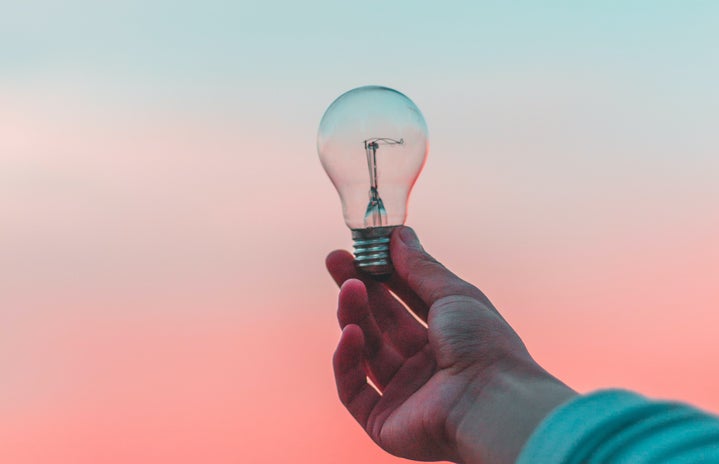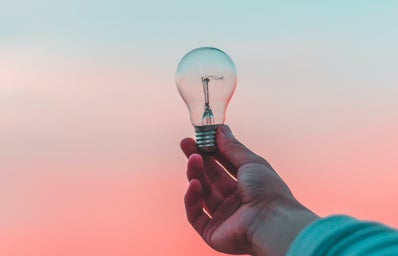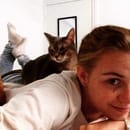Teacher’s advice: How to talk to kids about gender
If there’s one thing in life that makes my blood boil, it is when people say that something is “for girls” and other things “for boys”. I know you’ve heard people say that before, everybody has. When adults say it, it makes me so angry…but when kids say it, it makes me really sad. It makes me sad because children, from the start, don’t see gender as an obstacle to anything. Of course, when they are young, they get curious about what makes someone male or female, but they don’t see either option as good or bad.
Children will start saying things like “this is for boys only” and “let’s do boys against girls” usually around 5 years old. But this doesn’t come naturally to them, they are thought to think this way. What comes naturally to kids is expressing their own gender, not expressing gender rules. It saddens me every time I go to a school where children are asked to line up two by two, boys on one side and girls on the other. Every time I have to separate boys and girls for academic purposes, it makes me wonder “what about that one kid who doesn’t know where they fit yet, or doesn’t fit in either category?”.
Kids have a lot of questions about gender. With all the complicated gender rules we throw at them, that’s to be expected. So, here are a few tips on how to talk to kids about gender and gender identity.
1. Don’t generalize too much…
A lot of people tend to generalize when talking about gender. Boys are like this, girls are like this. No. Big NO! Generalizing can be very harmful! If a child asks you questions about gender, it may be because they are trying to figure themselves out, and saying “All boys/girls are like…” can make them feel very excluded or confuse them even more.
Instead of saying “All are like this” you can say “A lot of people”. A lot of people like cake, that does not mean that everybody does, and that does not mean either that those who don’t like cake are wrong in any way for not liking it.
What you might say: A lot of women have boobs.
You should instead say: Some women have boobs, but having boobs or not having them isn’t what makes you a woman.
What you might say: A lot of boys like to cut their hair short.
You should instead say: Many boys tend to keep their hair shorter, but some prefer it longer.
Try to avoid traps like favorite items/colors/toys and talking about clothing. Depending on the culture, these things can vary a lot! In some cultures, boys and girls wear clothing that we in North-America would qualify as a dress or skirt. Saying that skirts and dresses are for girls can invalidate the cultural identity of some kids because in their culture this type of dressing is for all.
2. Flip the questions around
Last week, I was teaching a kindergarten class. This little kid comes up to me and asks:
“Why are boys not playing with dolls?”
“I don’t know” I answered. “Why do you think?”
“I think it’s because the girls are always playing with them and the boys don’t get a chance to play too.”
“Well, what should we do about this?”
“We could share!”
When kids ask questions, they often have already come up with some kind of answer to it. It doesn’t really matter if their answer to the question is correct, or even logical (my little cousin once said that men have beards because the hair on their heads is shorter so the rest of it needs to come out from their chin!). What’s important is that kids develop their own perception and ideas of gender and gender identity, and don’t just swallow up preconceived societal ideas.
By all means, if a child answers a question with an answer that is either very stereotypical or generalizes to only one gender all the time, I would recommend to just present them with another answer or way of seeing things. Example:
“Pink is for girls” says a six years old.
“How come?”
“Because that’s how it is.”
“But what about raspberries…raspberries are pink. Are only girls allowed to eat them?”
“No…”
I’m not saying here that you have to tell them bluntly that they are wrong, because they are only kids, they don’t know better, but you can slowly try to expand their horizons and make them see that not everything is one way of the other.
3. The Brain knows!
What makes us a boy or a girl? Genitalia is not the answer, for not everyone who shares a gender identity has the same kind of genitalia. Think about it for a second. What makes you the gender that you are?
For many, the answer lies in how we function in society, and whether or not we fit/agree with the gender norms. But, if we exclude all these norms, then what is gender?
“Well, I just know.”
Aha! That’s the answer!
The thing is, the brain knows! Your brain knows if you are a boy, a girl, both or neither. You can feel it. For some people, this knowledge feels very obvious. Like an “obviously” kind of knowledge. But for others, they know how they feel in their own body and mind, but they don’t know the words to express it. That’s normal. We live in a world that loves labels, but not everything has a label all the time. If you ever meet a child with is unsure of their gender, or doesn’t know how to express how they feel, just reassure them and stay patient.
4. Give examples
Danger and Eggs, The Loud House, Steven Universe
Adventure Time, Star vs. The Forces of Evil, One Day at a Time, Middle School Moguls
And so many others…
Here are kid-friendly shows with characters who either challenge the gender norms or have a gender identity different than cisgender*.
More and more, there are books, movies, shows, and toys that challenge gender norms. Mattel, a well-known toy company, recently launched a gender-neutral doll collection Creatable world. And although there is some controversy on the terminology they are using, this is one of the first toy that not only is meant for any child, but also that looks like anyone and everyone! Dolls with feminine hair and masculine clothes, with different skin tones, different features, different clothes, and hobbies.
Everyone likes representation. We like to feel seen and understood. Helping kids find characters, toys that make them feel comfortable in their gender identity is not only much easier to find nowadays, but also very important.
*Cisgender: someone who identifies with the gender they were assigned at birth
5. Find the neutrality
If you aren’t sure how to answer a question, or how to address an issue, find the neutrality. No color, hobbies, toys, clothing or haircut is for only one gender.
Try to change your vocabulary to include everyone. Instead of lining-up kids by gender, line them up by alphabetical order. Instead of saying “girls come pick up your notebooks”, say “table one” or “everyone wearing red today”.
I know, it’s not always easy. We live in a world that is very gendered, and I’m not saying here that you have to stop referring to someone’s gender. I’m just saying that gender can be confusing for kids, and the more we talk about it, the more we put ideas in their heads instead of letting them figure it out. Never will I lie to my students and tell them that I am something I am not. I am a woman, that’s my identity. But if they ask me if I ever wondered if I was a boy, I will tell the truth: Yes!
Asking yourself questions doesn’t make you anything. If that was the case, I would start asking myself if I was a witch so I could magically get powers! Or I would start asking myself if I can fly and then grow some wings and fly off to Mexico!
Asking yourself questions, and questioning things you’ve never questioned before makes you more aware and more open to diversity. This is something we need to teach kids too!
Images obtained from
https://mediad.publicbroadcasting.net/p/shared/npr/styles/x_large/nprshared/201908/748727079.jpg
http://zulleon.com/wp-content/uploads/2016/06/kids-gender-blog-final-.jpg
https://static.onecms.io/wp-content/uploads/sites/38/2016/06/13005534/jaime_king_gender_neutral.png
https://cdn.collider.com/wp-content/uploads/2017/06/danger-and-eggs-image-1.jpg
https://www.lunamag.com/wp-content/uploads/2018/03/totem-kids-spring-01.jpg
https://s31242.pcdn.co/wp-content/uploads/2019/08/genderunicorn1-1-1024×791.jpg


